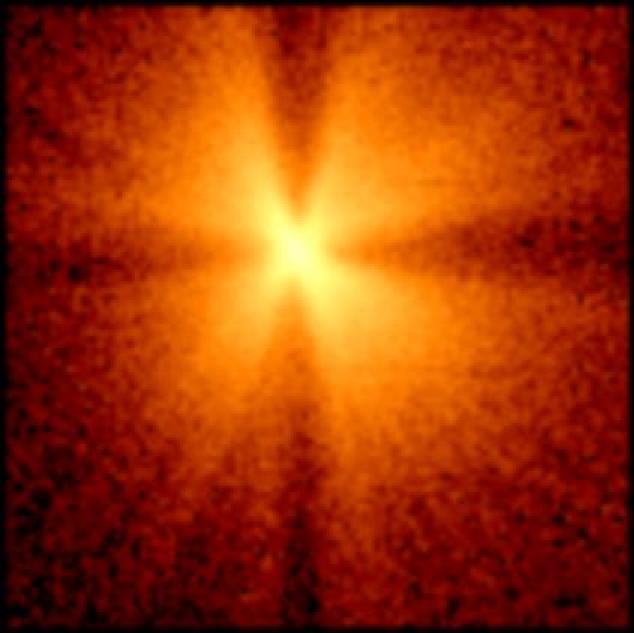
 Credit: ASCA GOF/GSFC/ISAS
Credit: ASCA GOF/GSFC/ISAS
Cross of Gold
X-rays images are difficult to make, since X-rays easily pass through most
materials without focussing. To focus X-rays into an image of the sky,
astronomers use special mirrors in which the X-rays skip off the mirror
surface at grazing incidence, much like a rock skips off the surface of a
lake. Most X-ray mirrors have been made of glass, which must be highly
polished in order to focus accurately the incident X-rays. For example
the best
X-ray mirrors ever built are on the Chandra X-ray observatory. These
mirrors are so smooth, it's as if the earth has been bulldozed so that the
highest mountain is less than 2 meters high! But such mirrors are difficult
to make and expensive to launch.
An alternative type of X-ray mirror has been constructed using, not glass,
but aluminum foils coated with a thin layer of gold. Such foil mirrors are
much lighter than glass mirrors and so are cheaper to use in X-ray
satellite observatories. Because hundreds of thin foils can be used to
create a single mirror, such mirrors can be much more efficient at
gathering X-rays from astronomical sources. These mirrors however do not
produce the exquisite images that can be obtained by mirrors like those on
Chandra. The image above shows an X-ray star observed by the ASCA satellite, the first X-ray
observatory to use thin foil X-ray
mirrors. The thin foil mirrors produce the signature "cross" shape due
to the the mirror support structures.
Last Week *
HEA Dictionary * Archive
* Search HEAPOW
* Education
Each week the HEASARC
brings you new, exciting and beautiful images from X-ray and Gamma ray
astronomy. Check back each week and be sure to check out the HEAPOW archive!
Page Author: Dr. Michael F.
Corcoran
Last modified December 1, 2000


